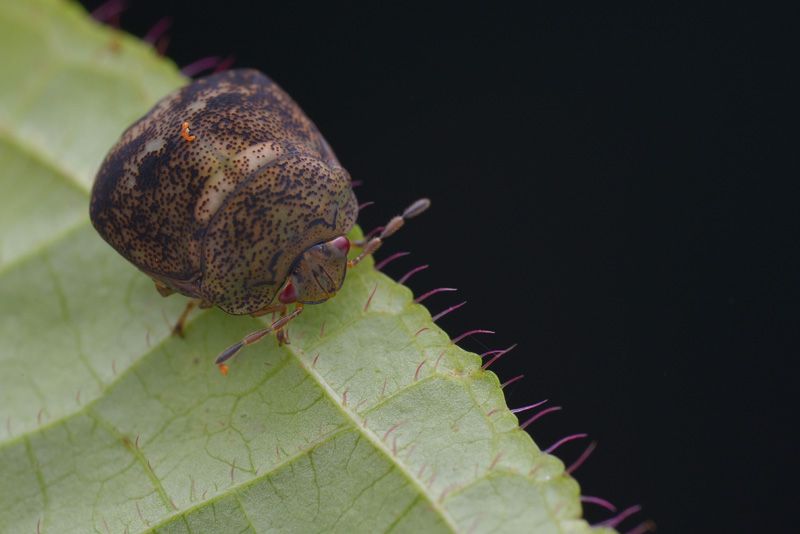
Plataspid – Kudzu Bug – Globular Stink Bug – Leblab Bug – Megacopta
Plataspid – Kudzu Bug – Globular Stink Bug – Leblab Bug – Megacopta cribraria
Description of Insect:
The Kudzu bug (Megacopta cribraria), is also commonly known as the Plataspid bug, Bean plataspid, Globular stink bug, or Leblab bug. It is a small, round insect belonging to the Plataspidae family. Native to Asia, particularly China, India, and Japan, this bug has become an invasive species in the United States. It measures about 3 to 5 mm in length, with a mottled brownish-green body that appears somewhat globular. The insect has a distinctive shield-like shape, and emits a foul odor when disturbed, making it a nuisance in infested areas.
Unlike other stink bug species, Kudzu bugs have a symbiotic relationship with gut bacteria, which helps them digest plant material efficiently. These insects primarily feed on legumes, including soybeans, peanuts, and their namesake, kudzu—a fast-growing, invasive vine. They use piercing-sucking mouthparts to extract nutrients from plant stems and leaves, weakening the host plant.
Life cycle of Plataspid:
The Kudzu bug undergoes incomplete metamorphosis, consisting of three main life stages: egg, nymph, and adult. Females lay their barrel-shaped, light brown eggs in clusters of 26 to 274 on the underside of leaves. Along with the eggs, the females also deposit capsules containing the symbiont (bacteria), which the nymph feeds on for its development. The nymphs, which are smaller versions of the adults but with a spiky appearance, go through five molts before reaching maturity. The entire life cycle takes about six to eight weeks, allowing multiple generations to emerge each year, particularly in warm climates.
The bugs overwinter as adults, seeking shelter in leaf litter, tree bark, or even inside homes and buildings. When temperatures rise in spring, they emerge and migrate to kudzu and other leguminous plants to feed and reproduce.
Damage they cause:
Kudzu bugs pose a significant threat to both agriculture and residential areas.
- Agricultural Impact:These bugs are notorious for feeding on soybeans and other leguminous crops, piercing plant tissues to extract nutrients. This feeding behavior causes wilting, yellowing, and reduced photosynthesis, leading to lower crop yields. Heavily infested soybean fields in China report yield losses of up to 50% during spring.
- Household Nuisance:These bugs seek warm places to overwinter, often invading homes and buildings in large numbers. They cluster around windows, walls, and door frames, releasing a defense chemical with a strong, unpleasant odor when crushed or disturbed.
